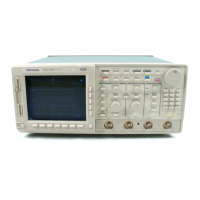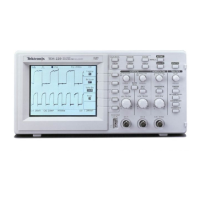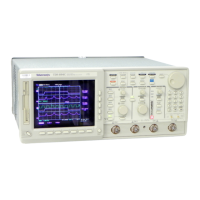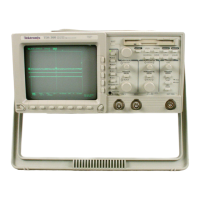Glossary
TDS 500B, TDS 600B, & TDS 700A User Manual
Glossary–9
Probe
An oscilloscope input device.
Quantizing
The process of converting an analog input that has been sampled, such as a
voltage, to a digital value.
Probe compensation
Adjustment that improves low-frequency response of a probe.
Pulse trigger
A trigger mode in which triggering occurs if the oscilloscope finds a pulse,
of the specified polarity, with a width between, or optionally outside, the
user-specified lower and upper time limits.
Real-time sampling
A sampling mode where the oscilloscope samples fast enough to completely
fill a waveform record from a single trigger event. Use real-time sampling to
capture single-shot or transient events.
Record length
The specified number of samples in a waveform.
Reference memory
Memory in a oscilloscope used to store waveforms or settings. You can use
that waveform data later for processing. The oscilloscope saves the data even
when the oscilloscope is turned off or unplugged.
Rise time
The time it takes for a leading edge of a pulse to rise from a LowRef value
(typically 10%) to a HighRef value (typically 90%) of its amplitude.
RMS
Amplitude (voltage) measurement of the true Root Mean Square voltage.
Runt trigger
A mode in which the oscilloscope triggers on a runt. A runt is a pulse that
crosses one threshold but fails to cross a second threshold before recrossing
the first. The crossings detected can be positive, negative, or either.
Sample acquisition mode
The oscilloscope creates a record point by saving the first sample during
each acquisition interval. That is the default mode of the acquisition.
Sample interval
The time interval between successive samples in a time base. For real-time
digitizers, the sample interval is the reciprocal of the sample rate. For
equivalent-time digitizers, the time interval between successive samples
represents equivalent time, not real time.

